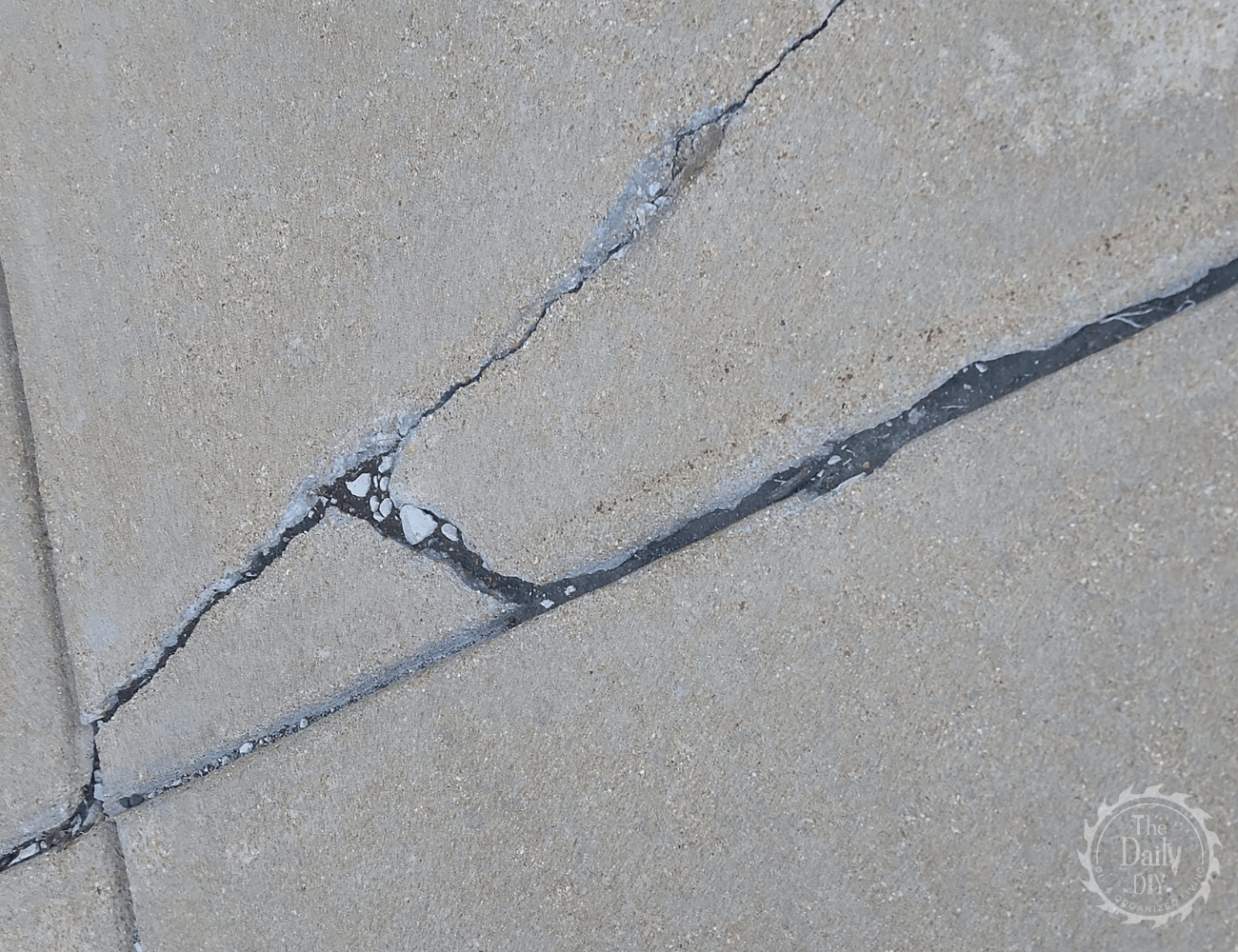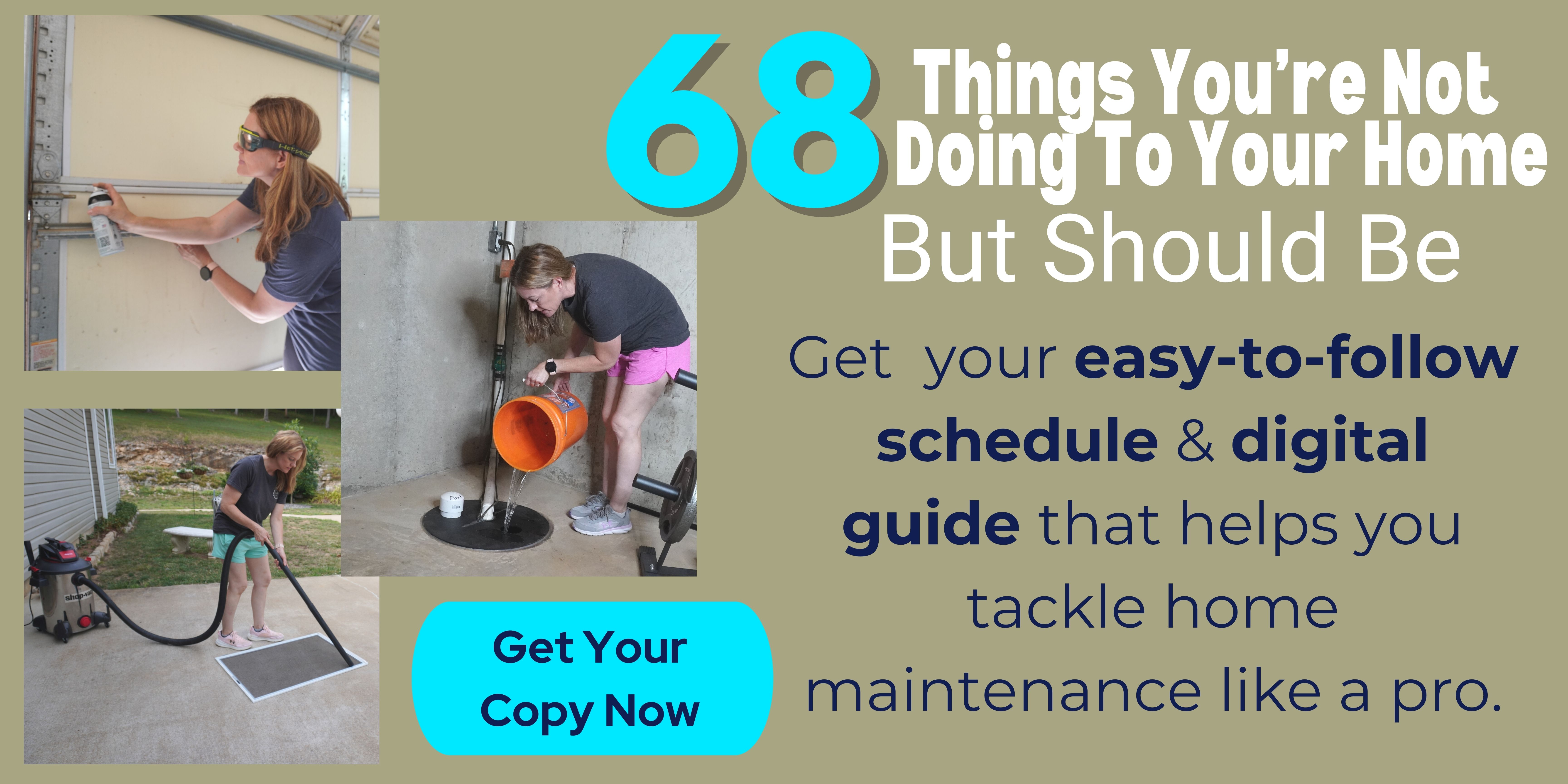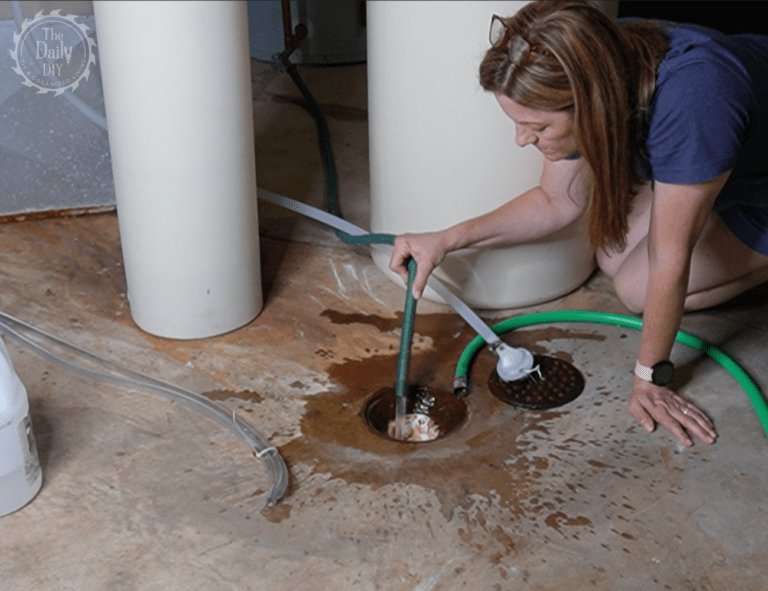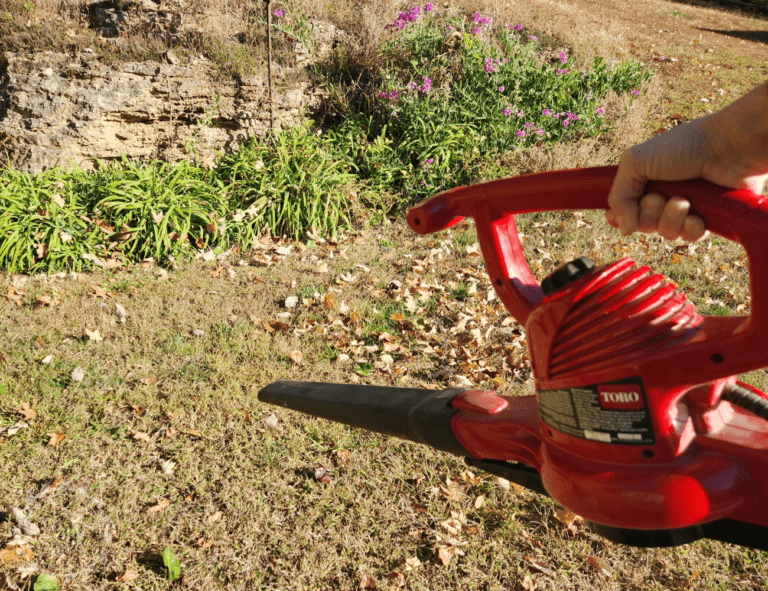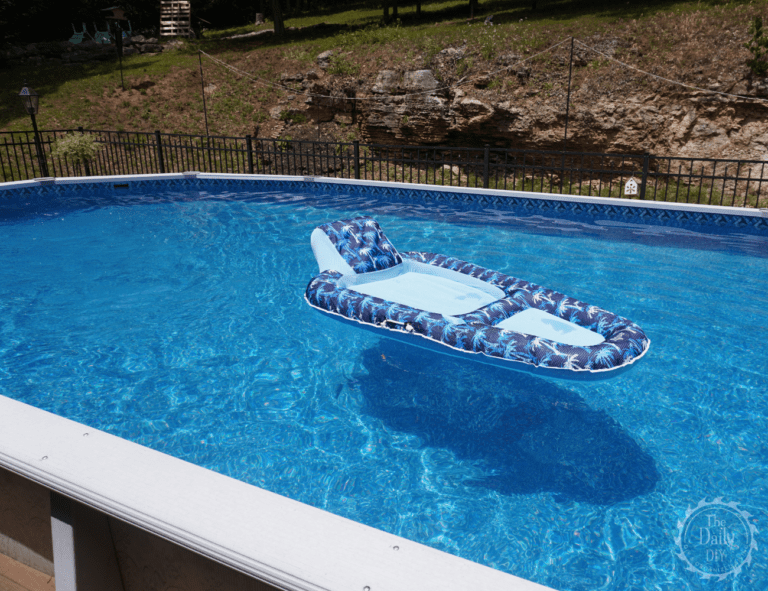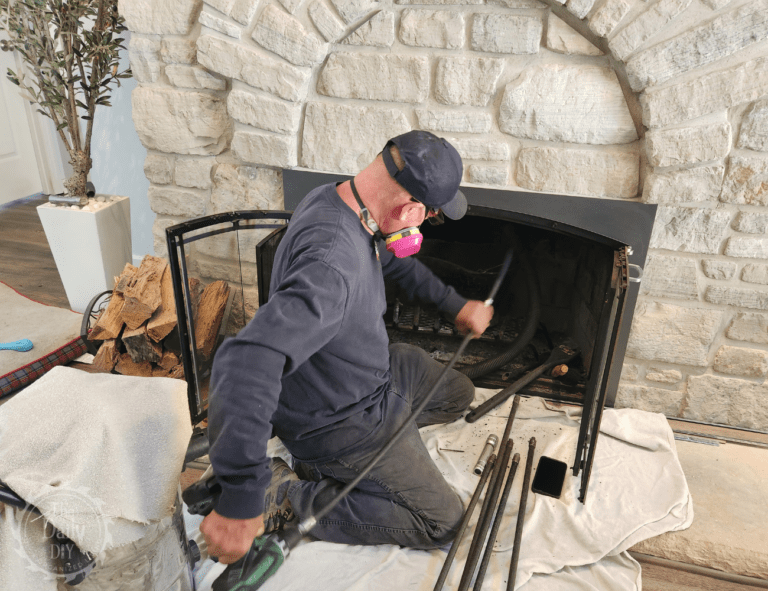How To Fill Cracks In Concrete
Repairing cracks in concrete is important to maintain the integrity of your surfaces. By using the appropriate caulk for concrete, you can effectively fill and seal these imperfections. This guide will walk you through the steps to fill cracks in concrete, ensuring a durable and long-lasting solution for your driveways and walkways
Concrete is the backbone of many outdoor surfaces, from driveways to walkways, offering durability and a sleek appearance. However, even the strongest concrete is prone to cracking over time due to various factors. The key to effective concrete repair lies in using the right caulk for concrete, which ensures a seamless and long-lasting fix. In this guide, we’ll explore the steps to repair cracks in concrete, from identifying the right products to the application process, so you can keep your concrete surfaces in top condition.
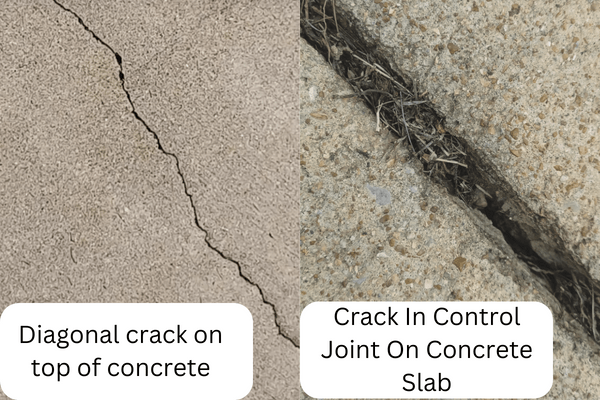
Why Does Concrete Crack?
You probably know the saying “there are two kinds of concrete, concrete that is cracked, and concrete that will crack”. Concrete can crack for a variety of reasons. Heavy loads, tree roots, shifts in the ground, and repeated refreezing and thawing. According to the National Building Inspectors, once a concrete crack widens past 1/8″, issues may develop and it’s best to get the crack in your concrete filled in before further damage occurs. The main purpose of repairing your driveway cracks is to keep water from flowing underneath the slabs. Water that seeps in through the cracks can cause the concrete to sink or shift. Cracks can also spread or widen. Let’s take a look at how to fill cracks in concrete.
With this in mind, inspect your concrete driveways and walkways often, and at the very least every fall before winter comes. Add this to your Fall Home Maintenance Checklist. Make a note of any cracking along the surface of your concrete, or at the controlled joints. Control joints are those “lines” that are left on purpose in between the slabs of concrete. Since extreme temperature changes can cause the concrete to crack, control joints are placed to relieve the stress from the slab during the expansion and contraction that happens during the temperature swings. Those control joints can still crack over time as well, allowing water to penetrate underneath.
Materials To Fill Cracks In Concrete
Check out our product recommendations here.
- Sikaflex Self Leveling Sealant (they make Grey or Sandstone color in 10 oz or 29 oz) or DAP Textured Concrete
- Caulk Gun (10 oz or 29 oz)
- Gloves
- Backer Rod (they make several different sizes, 3/8″, 5/8″, 1/2″, or 3/4″ )
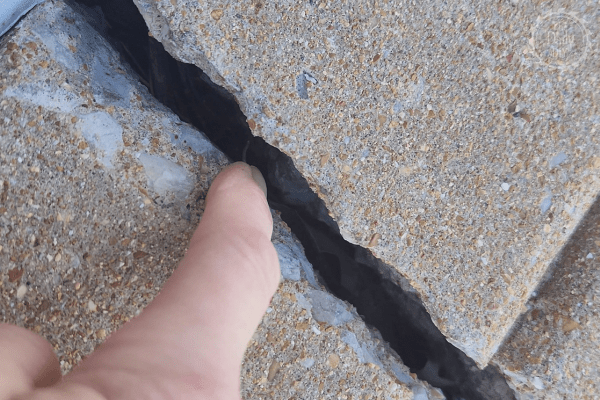
Make Sure Your Concrete Slabs Are Level
It is best to do this on level concrete. If your concrete slabs have sunk down, or cracked and partially shifted, you’ll want to get the slabs brought back as close to level as possible first. Call a company to come and inject a substance underneath your concrete that raises it back up. This can be done with either a process called mud jacking, or injecting polyurethane.
2 Types Of Filler For Cracks In Concrete
There are 2 types of crack filler to choose from that are made specifically for concrete repair. The reason for this is because they are flexible, which allows for the concrete to move due to expansion and contraction. Choose either a caulk, or a self leveling sealant.
Caulk is thicker and will require you to smooth it out when applied, but can be used on both horizontal and vertical surfaces. Self-leveling sealant is thinner and will run and fill in on it’s own with no manual leveling and can only be used on horizontal surfaces. Of course it is always a good idea to wear rubber gloves when applying these products.
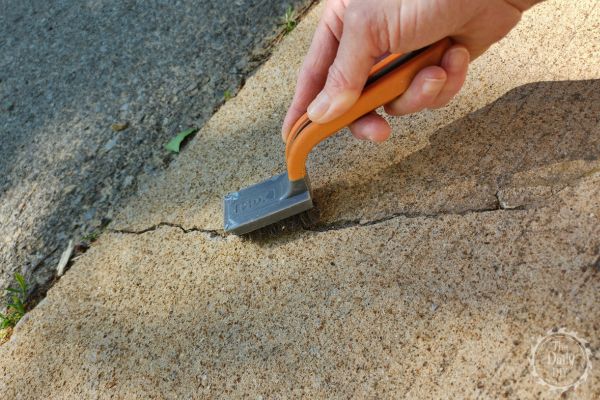
Before You Begin Your DIY Concrete Repair
Before you begin filling cracks in concrete, completely clean out all of the dirt, weeds and debris from the crack first. Take something to scrape it out then blow it with a leaf blower. Even a stiff wire brush can help clean out all of the debris. A power washer used to wash the crack out also works great. Be sure the concrete is completely dry before moving on to the next step if power washing.
Repairing most concrete cracks, whether it be to fill cracks in concrete driveway, patio, walkway, etc., can be done yourself over an afternoon. In order to make it easier for you, do the project on a dry day with little to no wind. Temperatures should be at least 50 degrees Fahrenheit for the product to set correctly.
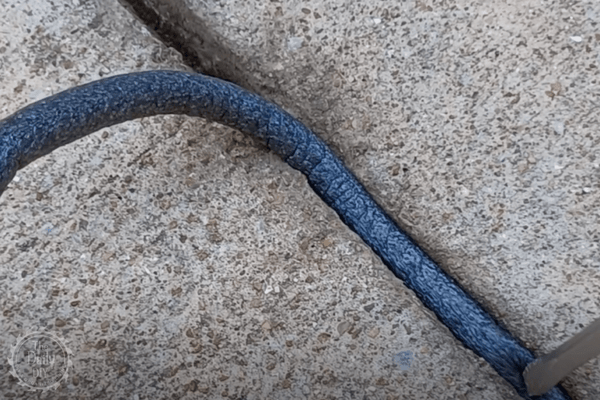
How To Fill Cracks In Concrete
For filling large cracks in concrete wider than ½”, apply some backer rod first. Backer rod comes in a roll and is designed to be applied snugly in to the crack. To ensure a tight fit, choose a backer rod size that is slightly larger than the width of the crack. Tuck the backer rod down in to the crack at least ½” below the surface of the concrete. Play sand can also be used in lieu of backer rod to fill in the wider, deeper cracks. Again, pack the sand down in to the crack at least ½” below the surface
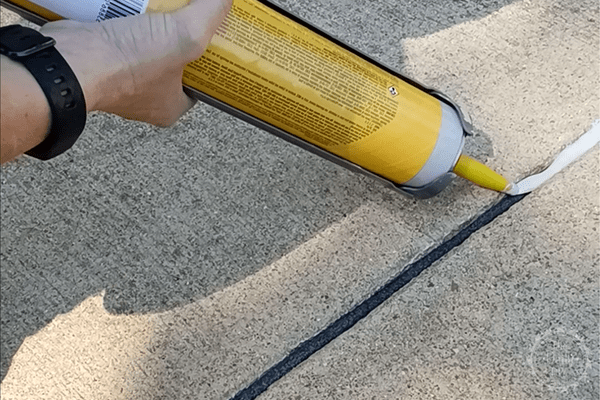
Once you have the backer rod in place, then apply your caulk or sealant. Start with loading your caulk gun with your chosen product, then squeeze the sealant in to the crack.
When using self leveling sealant, like Sikaflex, you only need to apply to fill the crack and the sealant will level itself out and fill in all of the proper areas. You’ll need to seal off the ends of your crack for self leveling sealant, otherwise it will want to run out of the end. Use caulk to seal off the ends, or even just grab a piece of mulch nearby. Stick the mulch in to the ground on each end. Later you can break off the piece of mulch when the sealant dries.
Using a back and forth motion, squeeze the caulk gun to release the sealant in to the crack. When the crack is full you are done.
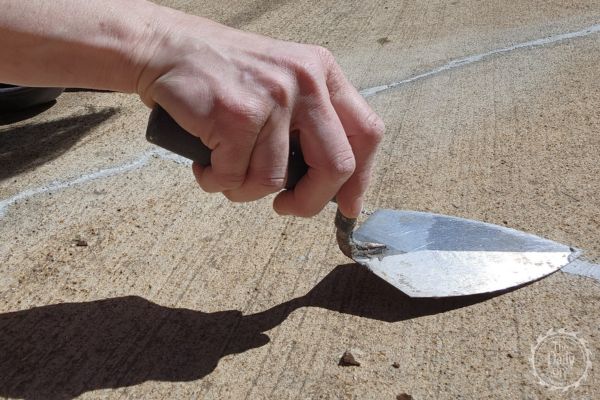
If using a concrete caulk, like DAP Textured Concrete, you’ll want to take a putty knife, caulking spatula, or even a painter’s tool to smooth it out once you’ve applied it to the surface.
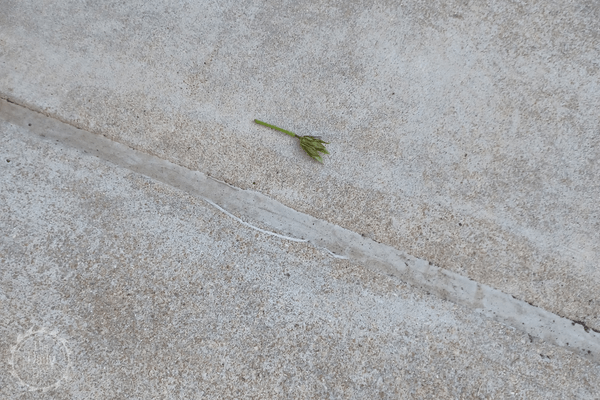
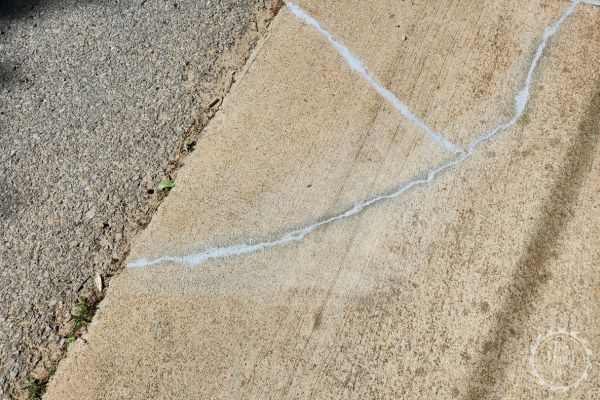
Give The Repair Some Time To Cure
It’s important to realize the caulk or sealant will be a brighter color when first applied. After a few weeks, the color should fade and blend in better with your concrete. You can apply a bit of sand to the top of the wet sealant to help it blend in even better.
Allow to dry at least 24 hours before walking or driving over the newly sealed crack. Sikaflex sealant or caulk should last you several years and help protect your concrete driveway or walkway.
In conclusion, mastering how to fill cracks in concrete is crucial for keeping your outdoor spaces in top condition. Whether you’re tackling minor blemishes or filling large cracks in concrete, using the right approach is key. We hope this guide has provided you with the knowledge you need for a successful repair. If you have any questions or additional tips to share, please feel free to comment below. We love hearing from our readers and learning from your experiences!
Shop For Supplies
Check out our product recommendations page to find the supplies we mentioned in this article.

